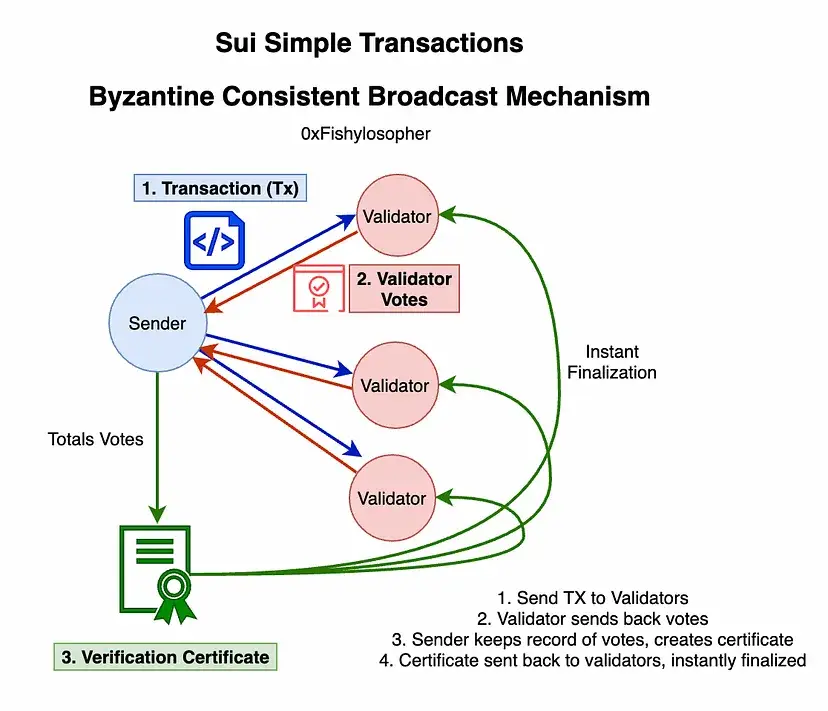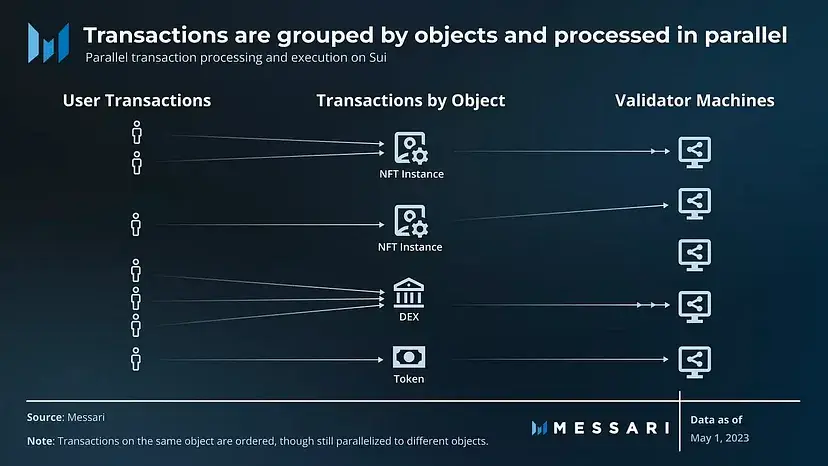Back
Simple Transactions
Sui
By HackQuest
Aug 15,20243 min readWelcome to the Web3 world, where digital finance and applications are shown in a revolutionary way through the fusion of blockchain technology, cryptocurrencies, and a pioneering spirit. Are you overwhelmed by the wealth of terms in the Web3 world that you don’t understand? Are those slang barriers for you to learn about Web3? Don’t worry! We’re here to explain the obscure terms to guide your learning. Today, we're diving into an innovative development in the world of Web3: Simple Transactions.
Definition and Overview
Simple Transactions represent a streamlined approach to processing transactions on the blockchain. In contrast to traditional blockchains, which often batch transactions into blocks, Simple Transactions are processed individually. This methodology aims to reduce latency and increase efficiency by validating each transaction on its own merits, rather than as part of a larger set. The result is quicker transaction finality and a more responsive blockchain network.

Source : Medium
Technical Composition
The technical foundation of Simple Transactions in the Sui blockchain involves several key components:
1.Byzantine Consistent Broadcast: This algorithm ensures that all validators in the network receive and agree on the transaction data without requiring full consensus, which is more complex and time-consuming.
2.State Locking: Instead of locking the entire blockchain state for a transaction, Sui only locks the relevant data required for that specific transaction. This allows for parallel processing and higher throughput.
3.Move Language: This programming language supports more complex transactions that can depend on multiple elements under the sender's control.
4.Multi-Lane Validation: Sui uses a multi-lane approach to validate transactions, allowing independent transaction flows to proceed concurrently without interference.

Source : Medium
Core Functions
The primary functions of Simple Transactions include:
1.Individual Validation: Each transaction is validated on its own, rather than in a batch, reducing latency.
2.Efficient Resource Use: By locking only the necessary data for each transaction, the blockchain can handle more transactions simultaneously.
3.Finality Certificate: Each transaction receives a certificate of finality quickly, ensuring that it has been processed and cannot be reversed.
4.Parallel Processing: Independent transactions can be processed in parallel, enhancing overall network performance.
Use Cases
Simple Transactions have a wide range of applications in the Web3 ecosystem:
1.Peer-to-Peer Transfers: Quick and efficient sending of assets between users.
2.Decentralized Finance (DeFi): Improved throughput for trading, lending, and other financial operations.
3.Gaming: Facilitates fast in-game transactions and asset transfers.
4.Supply Chain Management: Ensures rapid and verifiable transactions for tracking goods and services.
Importance in Web3 Ecosystem
The significance of Simple Transactions in the Web3 ecosystem cannot be overstated:
1.Scalability: Addresses scalability issues by enabling higher transaction throughput.
2.Efficiency: Reduces transaction times and improves overall network performance.
3.User Experience: Enhances user experience by providing faster transaction confirmations and lower latency.
4.Security: Maintains high security standards with Byzantine fault tolerance and efficient state locking.
User Experience and Innovations
The implementation of Simple Transactions brings several innovations to the user experience:
1.Low Latency: Users benefit from near-instant transaction confirmations.
2.High Throughput: The network can handle more transactions per second, leading to smoother operations.
3.Transparency: Each transaction’s finality is quickly verifiable, enhancing trust.
4.Complex Transactions: The Move language allows for more complex and customizable transactions, expanding the range of possible applications.
Challenges
Despite its advantages, Simple Transactions face several challenges:
1.Complex Implementation: The algorithms and state management techniques required are sophisticated and require careful implementation.
2.Cross-Validator Coordination: Ensuring all validators consistently and efficiently process transactions can be challenging.
3.Resource Management: Efficiently managing computational resources to prevent bottlenecks.
4.Security Risks: Ensuring that the new transaction model does not introduce vulnerabilities.
Conclusion
Simple Transactions represent a significant advancement in blockchain technology, offering enhanced scalability, efficiency, and user experience. By focusing on individual transaction validation and leveraging innovative techniques such as Byzantine Consistent Broadcast and state locking, Sui has created a robust and responsive blockchain network. As the Web3 ecosystem continues to grow, innovations like Simple Transactions will be critical in driving adoption and unlocking new possibilities in decentralized applications and digital finance.
Embrace the future with Simple Transactions and experience the next level of blockchain efficiency and performance. Stay tuned as we continue to explore and demystify the exciting advancements in Web3 technology.